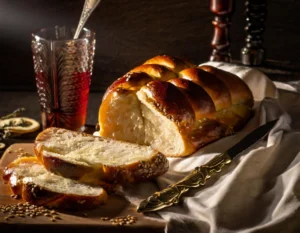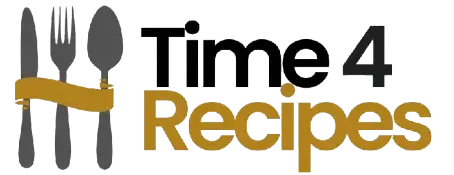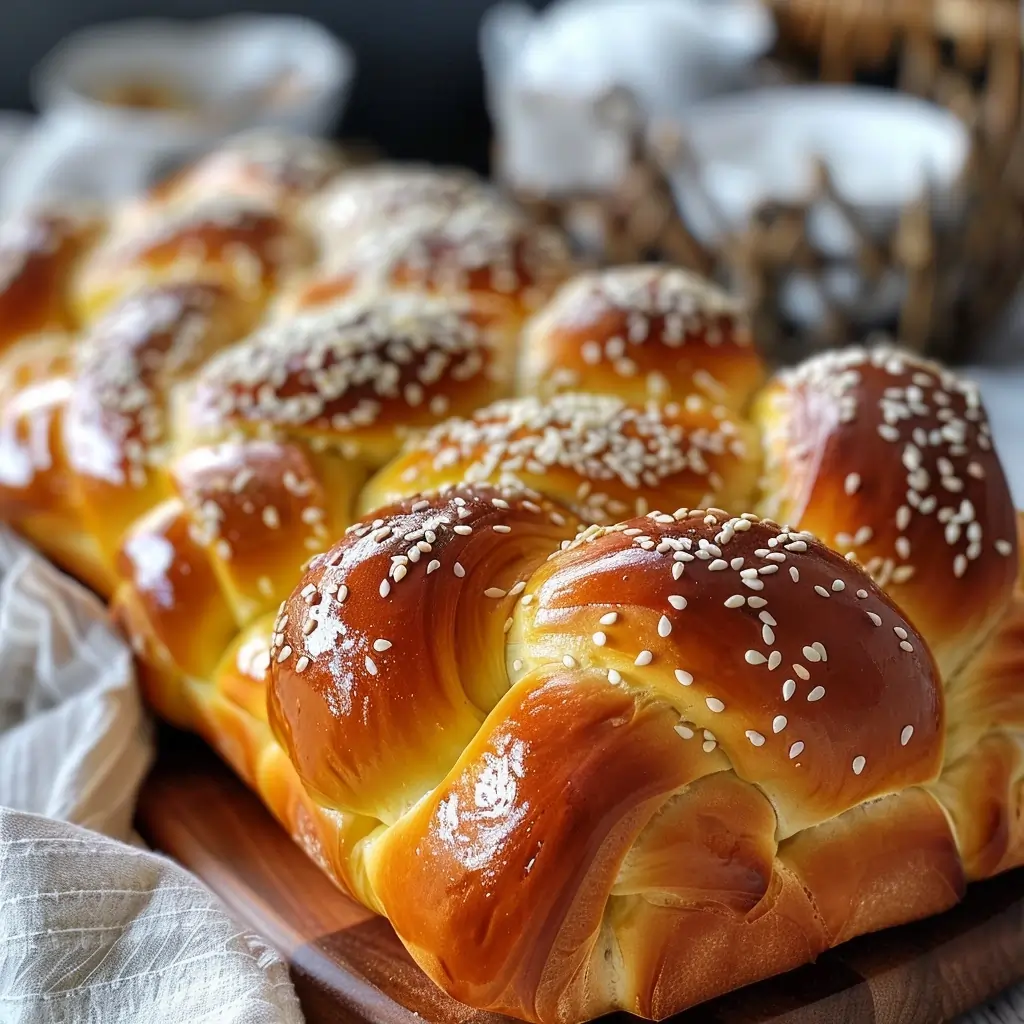Introduction to Challah Bread
Challah bread is a traditional Jewish bread, typically made with eggs, flour, water, sugar, and yeast. It’s known for its slightly sweet flavor and soft, airy texture. The bread is usually braided, though some variations exist, and is often enjoyed on Shabbat, Jewish holidays, and festive occasions. However, it’s not limited to only these times and can be savored at any point.
While challah’s history is rich, it has also gained popularity worldwide due to its versatility and delicious taste. Whether you’re new to challah or a long-time fan, learning how to eat challah bread will open up a variety of possibilities for your meals.
learning how to eat challah bread opens up endless possibilities. In this guide, we’ll explore creative ways to savor challah, from traditional pairings to modern twists.

The Unique Characteristics of Challah Bread
Before we dive into how to eat challah bread, it’s important to understand what makes this loaf so special.
- Texture: Challah is soft, fluffy, and slightly dense, with a golden crust. The bread’s slightly sweet flavor makes it a great choice for both savory and sweet dishes.
- Braided Design: One of the most distinctive features of challah is its braided form, symbolizing the unity of family and community. This makes it not only a delicious food but also a visually stunning one.
- Ingredients: The combination of eggs and a bit of sugar creates a rich, tender texture. The high egg content also contributes to its signature golden color.
These unique characteristics are part of what makes challah bread so beloved in Jewish culture and beyond.
How to Serve Challah Bread
The beauty of challah lies in its versatility. Here are some traditional and modern ways to serve it:
- Plain and Fresh: Enjoy freshly baked challah with a simple spread of butter or honey. The natural sweetness of the bread shines through.
- As a Side Dish: Pair challah with hearty soups, stews, or salads for a satisfying meal.
- Toasted Perfection: Lightly toast challah slices for added crispness and pair with your favorite spreads.
For additional serving inspiration, explore this comprehensive guide on how to eat challah bread.
Preparing Challah Bread for Eating
Once you’ve baked or bought a fresh loaf of challah, it’s time to figure out how to eat challah bread. Here are some simple ways to prepare it for various meals:
- Slice it Fresh: Cutting a warm loaf of challah is an experience in itself. The inside is soft and fluffy, with a slight sweetness. Be sure to use a serrated knife to avoid squishing the loaf.
- Toast It: If you prefer a bit of crispiness, toasting your challah bread brings out its rich flavor and adds a nice crunch. Simply slice, butter, and toast it to your liking.
- Warm It Up: If your challah has been stored for a day or two, warm it up in the oven at 350°F for 5-10 minutes. This will help restore its softness.
In addition, challah can be eaten plain or paired with other ingredients. The possibilities are endless!

Using Challah Bread as a Base for Toppings
One of the best things about challah bread is its versatility. Whether you prefer sweet or savory toppings, how to eat challah bread with toppings can elevate your meal.
- Buttered Challah: For a simple yet delicious option, spread a generous layer of butter on warm challah. The butter melts into the soft bread, creating a melt-in-your-mouth experience.
- Jam or Honey: For a sweet treat, spread your favorite jam or honey over challah. The bread’s subtle sweetness pairs perfectly with fruity or floral spreads.
- Avocado and Eggs: If you’re looking for a savory option, top challah with mashed avocado, a pinch of salt, and a fried egg. This makes for a filling breakfast or brunch option.
By experimenting with different toppings, you’ll discover how to eat challah bread in various forms, suited to your personal taste.
Making Challah Bread Sandwiches
Challah bread’s rich texture and mild sweetness make it an excellent choice for sandwiches. Whether you’re making a classic deli sandwich or something more unique, challah can serve as a sturdy and flavorful base.
- Grilled Cheese: Use challah bread to make the best grilled cheese sandwich. The slightly sweet bread complements the salty cheese, and the soft interior creates the perfect contrast to the crispy, buttered exterior.
- Turkey and Cranberry: A Thanksgiving-inspired sandwich made with sliced turkey, cranberry sauce, and a few greens. The sweet challah complements the tangy cranberry sauce, giving your sandwich a delightful balance of flavors.
- Vegetarian Options: If you’re looking for a vegetarian alternative, fill your challah sandwich with hummus, roasted vegetables, and some leafy greens for a wholesome meal.
In short, when making a sandwich, challah bread serves as the perfect, flavorful foundation.
Incorporating Challah Bread into Breakfast Dishes
When it comes to breakfast, challah bread shines in many dishes. Here are a few creative ways to enjoy it during the most important meal of the day:
- French Toast: For a classic breakfast dish, use challah as the base for French toast. The soft texture soaks up the egg mixture beautifully, creating a fluffy and rich treat.
- Ingredients: Challah slices, eggs, milk, cinnamon, vanilla extract, butter, syrup
- Preparation: Dip challah slices in the egg mixture, then cook on a griddle or skillet until golden brown. Serve with syrup, fresh fruit, or powdered sugar.
- Challah Pancakes: Turn your challah into pancake-style bread. Slice it into thick pieces and cook it like pancakes, serving it with maple syrup and fresh berries.
- Challah with Yogurt and Fruit: For a lighter, nutritious breakfast, layer pieces of challah with Greek yogurt and fresh fruit. Drizzle with honey for a delicious twist.
These breakfast ideas show just how versatile how to eat challah bread can be in your morning routine.

Cooking and Baking with Challah Bread
Challah bread is not only great for eating on its own, but it can also be used in other cooking and baking recipes. Here’s how to incorporate it into different culinary creations:
- Challah Croutons: Transform stale challah into croutons for soups and salads. Simply cube the bread, toss it with olive oil and seasonings, and bake until golden and crispy.
- Challah Bread Pudding: This is a perfect dessert for using up any leftover challah. The bread soaks up a rich, egg-based custard and bakes into a warm, comforting dish.
- Ingredients: Challah, eggs, milk, sugar, vanilla, cinnamon, raisins (optional)
- Preparation: Cut challah into cubes, soak in the custard mixture, and bake until golden brown. Serve with whipped cream or ice cream.
- Challah Stuffing: If you’re preparing a festive meal, challah can be used to make a delicious stuffing. The dense texture holds up well in savory stuffing recipes, especially when combined with herbs, vegetables, and broth.
How to Eat Challah Bread: A Comprehensive Guide
Challah bread, with its rich, soft texture and slightly sweet flavor, is a beloved staple in Jewish cuisine. However, its versatility and cultural significance have made it popular in many households worldwide. Whether you’re preparing it for a special occasion, as part of a meal, or simply to enjoy as a snack, learning how to eat challah bread in various contexts can deepen your appreciation for this iconic bread.
In this article, we explore how to eat challah bread across different occasions, cultural rituals, and health perspectives, giving you a well-rounded view of this timeless delight.
Pairing Challah Bread with Meals
Challah bread is incredibly versatile when it comes to meal pairings. First, it is often served as an accompaniment to hearty dishes such as soups and stews, but it can also be enjoyed in other creative ways.
Best Pairings for Challah Bread:
- Soups & Stews: The soft texture of challah absorbs flavors well, making it ideal to serve with chicken soup, matzo ball soup, or beef stew.
- Breakfast: For a sweet start to your day, you can serve challah with jam, honey, or fruit spreads. It’s also perfect for French toast.
- Cheese & Dips: Try pairing challah with cheese boards or dips like hummus and baba ganoush. The mild flavor of challah enhances the taste of creamy cheeses.
- Salads & Light Dishes: For a more balanced meal, pair challah with leafy greens, a light vinaigrette, or Mediterranean-style dishes like falafel and tabbouleh.
Additionally, challah’s versatility means it can be used in sandwiches, offering a rich texture to simple lunch fare.
Pairing ideas like these add depth to your understanding of how to eat challah bread.
Hosting a Challah Bread Tasting Event
If you want to introduce others to the rich flavors of challah bread, hosting a tasting event can be a fun and educational experience. A challah bread tasting gives guests a chance to appreciate the bread’s textures, flavors, and versatility in different forms.
Tips for Hosting a Challah Bread Tasting:
- Provide a Variety of Flavors: Offer different styles of challah, such as sweet challah, savory challah with herbs, and even gluten-free options.
- Pair with Drinks: Complement your tasting , tea, or fruit juices. A tea pairs well with sweet challah.
- Offer Toppings: Prepare a selection of spreads, cheeses, fruits, and nuts for guests to pair with the challah. Honey, chocolate spread, and whipped cream cheese are popular choices.
- Educate Your Guests: Explain the cultural significance of challah bread and share its history. Talk about how to eat challah bread during Jewish rituals, such as Shabbat dinner.
By offering a variety of pairings and an informative experience, your guests will leave with a greater appreciation of challah’s diverse uses.
How to Eat Challah Bread as Part of Religious and Cultural Rituals
Challah bread holds great significance in Jewish culture, especially in religious and ceremonial contexts. One of the most popular occasions for eating challah is during Shabbat, where it is used to celebrate the beginning of the Sabbath.
Shabbat and Challah Bread:
- Two Loaves for Symbolism: Traditionally, two loaves of challah are placed on the table during Shabbat dinners, representing the double portion of manna that the Israelites received in the desert.
- Blessing Over Challah: Before breaking the bread, a blessing is recited: “Blessed are You, Lord our God, King of the Universe, who brings forth bread from the earth.” This prayer acknowledges God’s provision.
- Breaking the Bread: The bread is torn rather than cut, symbolizing unity and humility. Breaking challah during Shabbat meals creates a communal atmosphere.
Moreover, challah is also used for holidays like Rosh Hashanah, where it is often baked in a round shape to symbolize the cyclical nature of the year.
Health Benefits and Nutritional Information
While challah bread is a delicious indulgence, it is also important to be aware of its nutritional profile. Made with ingredients like eggs, flour, sugar, and oil, challah offers some surprising health benefits when consumed in moderation.
Nutritional Information:
- Rich in Carbohydrates: Like most bread, challah is primarily composed of carbohydrates, providing quick energy.
- Protein and Iron: The inclusion of eggs gives challah a protein boost. It also provides a small amount of iron, which is important for healthy blood circulation.
- Low in Fat: While it does contain oil, challah is generally low in fat, making it a healthier option compared to many other types of bread.
Health Benefits:
- Good Source of Energy: The carbs and protein in challah help fuel your body, making it ideal for breakfast or a snack.
- Iron for Blood Health: Eating challah can contribute to your daily iron intake, especially helpful for those who may struggle to get enough iron from other sources.
- Versatile for Dietary Needs: While not gluten-free, challah can be adapted to suit certain dietary preferences. Look for low-sugar or whole-grain versions for a healthier alternative.
However, because it is made with refined flour and sugar, it is best to enjoy challah in moderation.
Exploring Global Variations of Challah Bread
Challah has traveled well beyond its origins in Eastern Europe, and as it has spread across the world, it has taken on unique forms. Different cultures have adapted challah to reflect local tastes, ingredients, and customs.
Global Variations of Challah:
- Sephardic Challah: This version, popular among Sephardic Jews, is often flavored with olive oil and sometimes sesame seeds, giving it a lighter, slightly savory taste.
- Persian Challah: In Iran, challah is made with a bit of rosewater and sometimes saffron, creating a fragrant, aromatic bread.
- Sweet Challah Variations: In some cultures, challah is sweetened more heavily and sometimes filled with chocolate, cinnamon, or dried fruit, adding extra layers of flavor.
How to Eat Challah Bread Globally:
- Israel: In Israel, challah is often paired with salads, pickles, and fresh vegetables during Shabbat meals. It is also common to find challah rolls served in smaller portions at events or gatherings.
- Turkey: Turkish challah is often enriched with yogurt and served with rich stews or soups.
Exploring these variations of challah bread helps you appreciate its global influence and culinary flexibility.
(FAQs) About Eating Challah Bread
How is challah traditionally served?
Traditionally, challah bread is served during Shabbat and other Jewish holidays. It is often placed on the dining table as part of the blessing and prayers. Before eating, the bread is typically sliced and served alongside other dishes such as soups, salads, and main courses.
Challah can be eaten plain, but it’s also common to dip it in honey or challah’s natural juices from stews. Additionally, during the holiday of Rosh Hashanah, it is customary to serve challah with apples and honey, symbolizing the wish for a sweet new year.
Why do Jews eat challah bread?
Challah is a bread that holds deep significance in Jewish culture. It is traditionally eaten on Shabbat to honor the weekly day of rest. The two loaves represent the double portion of manna that the Israelites received in the desert. Eating challah serves as a reminder of God’s provision and a connection to Jewish heritage. It is also considered a symbol of unity, especially when shared with family and friends.
Is challah bread good toasted?
Yes, challah bread is fantastic when toasted! Toasting brings out a slightly caramelized flavor that enhances its natural sweetness. You can enjoy it plain or with a spread like butter, jam, or cream cheese. For an extra indulgent treat, try making French toast by dipping the slices in a mixture of eggs, milk, and spices before frying them up.
Why burn a piece of challah?
In Jewish tradition, it’s customary to burn a small piece of challah bread during the holiday of Passover. This symbolic act represents the elimination of chametz (leavened bread) before the start of Passover, when leavened products are prohibited. The burning of the challah signifies the removal of any leavened substances from the home, ensuring that the household is ready for the holiday.
How to heat up challah bread?
To heat up challah bread without losing its delicious softness, here are some options:
- Oven method: Wrap the challah in aluminum foil and heat at 300°F (150°C) for about 10-15 minutes. This keeps it soft while warming it through.
- Microwave method: Wrap the challah in a damp paper towel and microwave on a low setting for 20-30 seconds. This helps retain moisture.
- Toasting: Simply toast slices in a toaster or on a grill pan for a slightly crisped exterior and soft interior.
Why is challah eaten on Friday?
Challah bread is traditionally served on Friday evening to mark the beginning of the Shabbat meal. Families place two loaves on the table, symbolizing the double portion of manna that fell from the heavens during the Israelites’ journey through the desert. This act commemorates God’s provision of food for the Israelites while also emphasizing the importance of rest and reflection on the sacredness of Shabbat
Why do you dip challah in salt?
Dipping challah in salt during Shabbat is a time-honored tradition. The salt represents the bitterness of life’s hardships, offering a contrast to the sweetness of the challah. By performing this ritual, families acknowledge life’s challenges while celebrating the joy and abundance Shabbat brings.It serves as a reminder of the tears shed by the Israelites during their years of slavery in Egypt. The act of dipping symbolizes the balance between joy and sorrow, highlighting the importance of appreciating life’s blessings.
Conclusion: A Timeless Delight
Learning how to eat challah bread is more than a culinary journey; it’s a celebration of tradition, versatility, and flavor. Whether enjoyed plain, paired with a meal, or transformed into a creative recipe, challah remains a timeless delight that brings people together around the table. Experiment with these ideas, and you’ll soon see why challah holds a special place in kitchens worldwide.


2 thoughts on “How to Eat Challah Bread: A Guide to Enjoying This Delicious Treat”